The restaurant is a stage and every menu must play its part. Shakespeare said it for the world and man, but the evolution of menu cards seems to have taken the Bard’s words seriously
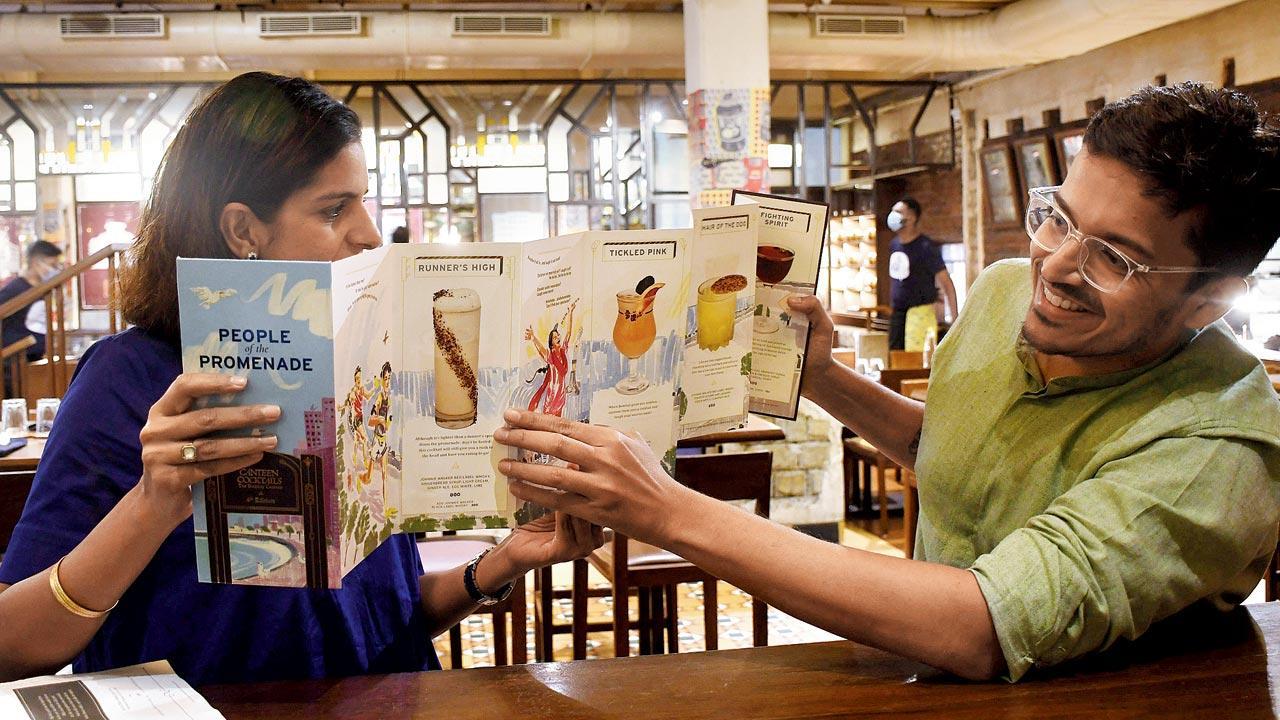
The Bombay Canteen’s co-founder Yash Bhanage with Please See’s Pritha Sahai, who says the idea behind the city-centric menus is to connect the guests to Mumbai and invoke a sense of pride. The People of the Promenade fold-out cocktails menu took inspiration from Marine Drive and its frequenters and was launched in 2019 right before the pandemic. Pics/Ashis Raje
The menu card was designed to serve a purpose. To tell you what was available to order at a restaurant on a particular day. If it was a set menu, you’d know what course to expect. Today, this is far from the truth.
A menu card is a tool and platform to take patrons on a tour of the establishment’s culinary philosophy, the provenance of ingredients and to “impress” them with cool banter. If done well, it can be an immersive experience for enthusiasts.
“If you see recent menus worldwide, you will realise that the complicated copy for the dishes have words that nobody understands. It may look cool but the guest might hesitate to order. I tell my team to be as clear as possible. Do not embarrass the customer,” says veteran restaurateur AD Singh.
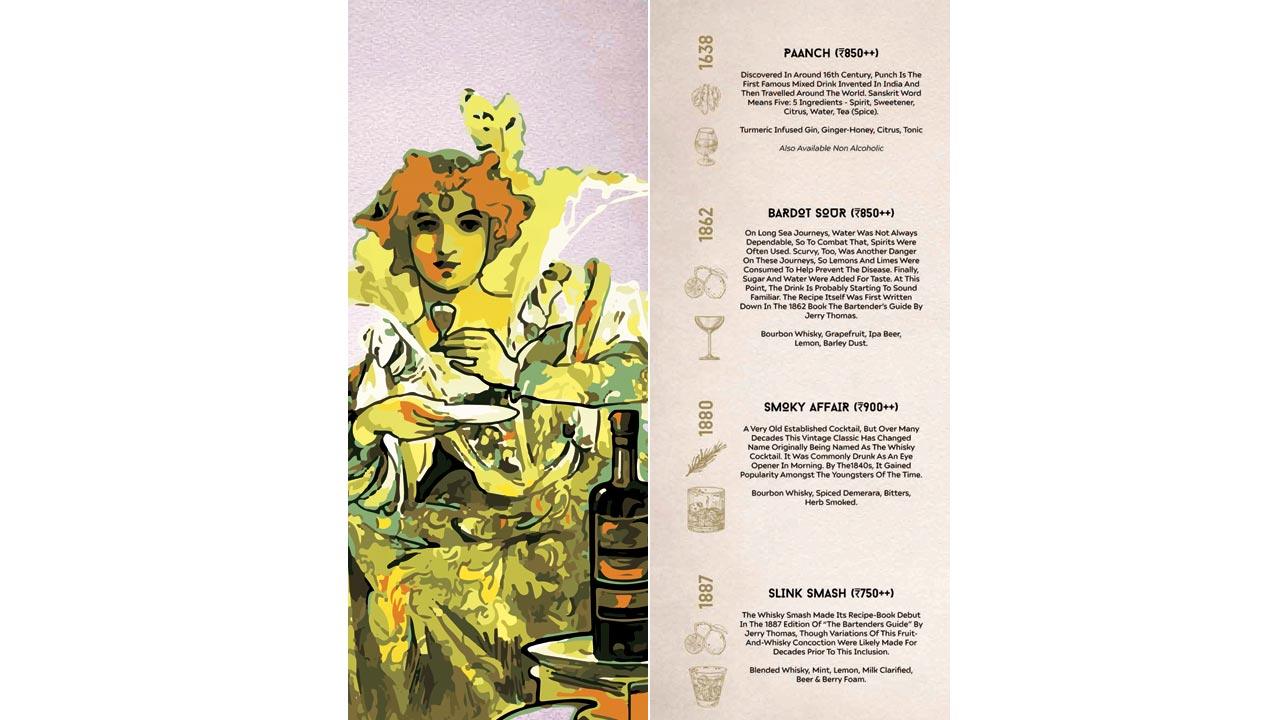 The cocktail menu for the just-reopened Slink & Bardot is lavish in illustration and showcases the Worli hideaway’s thrust on local and seasonal ingredients that are used to create infusions, bitters, shrubs and tonics. Here, cocktails are the hero and also available on tap
The cocktail menu for the just-reopened Slink & Bardot is lavish in illustration and showcases the Worli hideaway’s thrust on local and seasonal ingredients that are used to create infusions, bitters, shrubs and tonics. Here, cocktails are the hero and also available on tap
That doesn’t mean that Singh’s restaurants, including the iconic Olive Bar & Kitchen, don’t dig a good story. At both Olive and Monkey Bar, the chefs are encouraged to get innovative in the kitchen, but customers tend to get drawn to old favourites. “The same old dishes that are available everywhere will be ordered the most. It is a matter of great frustration for us. When people go out in groups, they want to catch up. They quickly order the simplest items on the menu,” he says.
To encourage guests to try something new, he relies on chefs to spend time interacting with the guests, trains the staff to push star dishes, and offers to comp off a recommended dish if a patron doesn’t like it. “For our menu, we take inputs from long time managers, chefs, and then work with the marketing team to create the final product along with an external design team.”
When a restaurant has a story to tell, the menu turns into a creative vehicle that offers added charm to the overall experience. This works especially well with cocktails since guests who order cocktails like being adventurous. “When they open the menu, usually, they don’t know which cocktail they want to have. They want to be told what to have,” Vicky Singh, partner at Slink & Bardot, explains. The Worli Koliwada resto-bar reopened recently after a makeover to serve a massive cocktails list, including some available on tap.
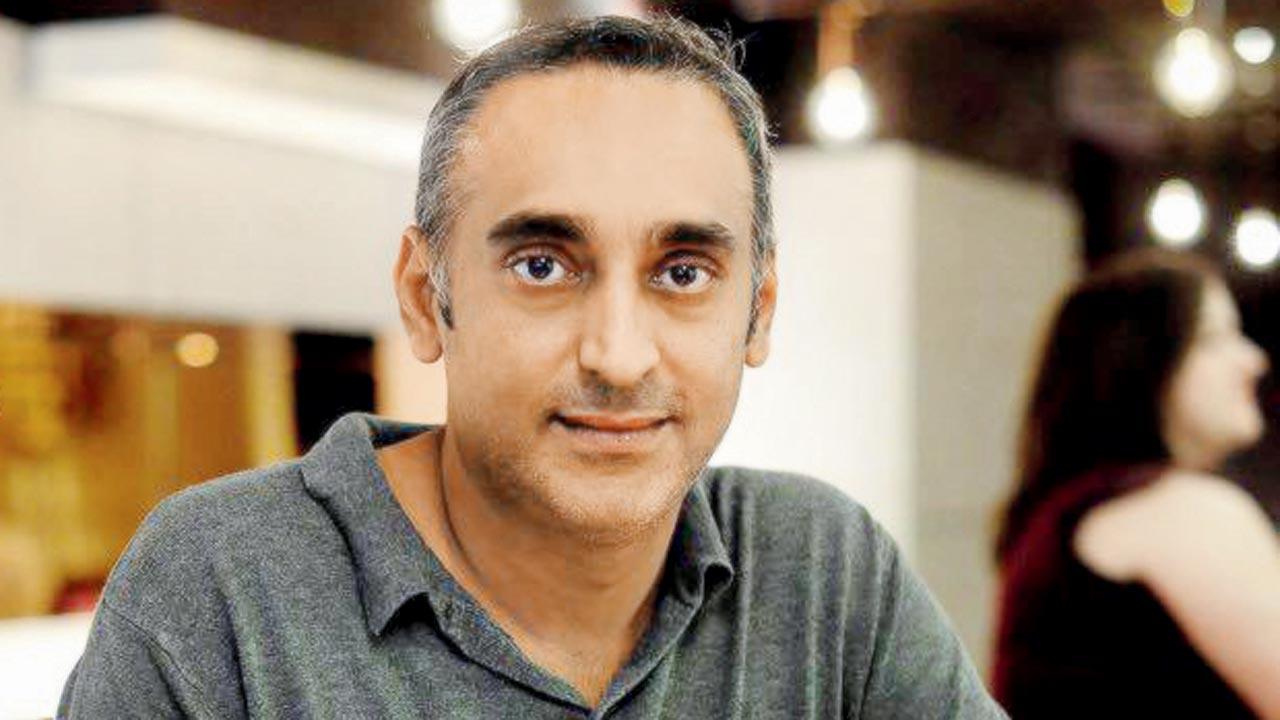 Vicky Singh
Vicky Singh
Santosh Kukreti, its cocktail mixologist, created the idea of evolution of cocktails, adapting a 16th century Indian punch to include gin, and adding a caffeine twist to an aeropress Negroni. “A good and real story should have genesis and truth. The idea behind the new menu design was to showcase the evolution of cocktails, and the talent of the bar team,” says Singh. He does, however, add that extra-fancy menus don’t go a long way. “Most of the time, they are there to serve the ego of the restaurant.”
‘Our menus cards moonlight as guide books’
The Bombay Canteen, Lower Parel
In 2016, The Bombay Canteen released a Christmas special menu card that popped open into a Christmas tree. This was to draw attention to their cocktail programme which was not moving according to expectation. The response to it was an aha! moment for the team. “We garnered great attention around this menu and more people ordered from it,” says co-founder Yash Bhanage.
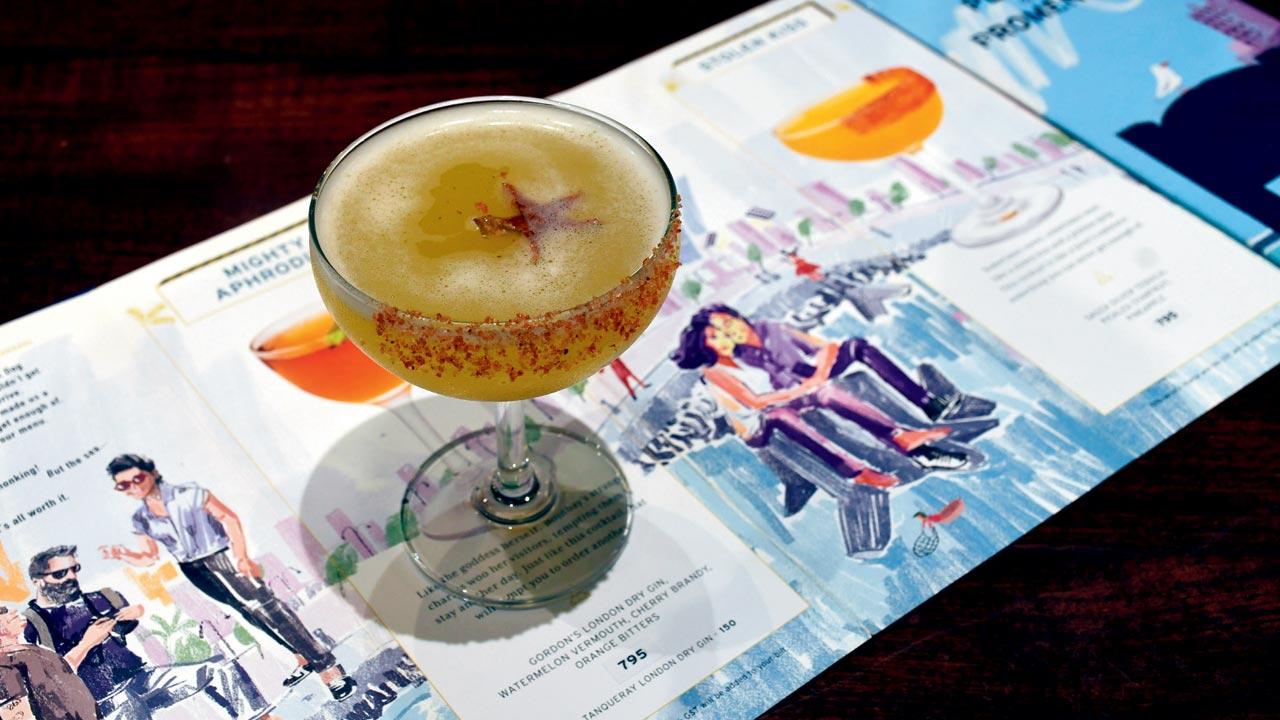
The next year, they released a lavish book-like menu that looked at cocktails reminiscent of the Art Deco structure of Bombay. It was a menu card designed to moonlight as a city guide. “The first cocktail book was created more as a problem solving exercise to bring focus to the bar,” says Pritha Sahai, co-founder of Please See, TBC’s brand agency. “We had to build a story around the emotion of Bombay. The city has one of the world’s most celebrated Art Deco districts. And we wanted its residents to feel proud,” she adds.
It was an immersive process for its writers and designers as they scored the city for information and sketch inspiration. TBC’s bar team then stepped in to finalise the cocktails they could create around the theme. This was a hit.
They followed this with three unique menus including a Canteen Cocktail Calendar based on the lingo of Amchi Mumbai; A Guidebook to the Talkies Of Bombay; A Forgotten Secret, and one that celebrates the People of the Promenade, taking inspiration from Marine Drive and its frequenters. This was in 2019 right before the pandemic.
For the one themed around the city’s theatres, they roped in Simin Patel of Bombaywalla Historical Works, a digital platform that creates awareness about Bombay’s built environment and social history. Along with the branding team, she set out to identify the founding stories of the theatres, by interviewing the descendants of the owners of the leading theatres syndicate, archival research and visits to the extant talkie structures. From Palace Talkies, the first cinema to come up in Byculla in 1932, to Matunga’s now shuttered Aurora, the guide offered suggestions on what to do around these spots. “Bombay forces you to become creative in everything you do. To reach a larger audience, you have to package your story in an innovative and relatable way. We recommended where you can go for chai, and also picked up flavours from the vicinity of the theatres for the bar team to incorporate in the drinks,” says Patel.
Each menu takes up to eight months to create. “We have to give enough time for design, printing and the creation of the cocktails. The direction comes from the bar team; during the summers for instance, they like to focus on martinis and highballs,” says Bhanage.
This year, they are toying with the idea of markets. “Apart from food and drinks, we offer an experience that guests take back with them. That said, only one out of 10 guests realises the effort that goes into making an innovative menu. However, it helps put us draw attention to the fact that The Bombay Canteen is doing something cool for its bar,” thinks Bhanage.
‘My outlook is to offer an iOS experience’
Lair, Vasant Vihar
When you enter Lair, black engulfs you. This is chef-owner Jay Solanki’s way of ruling out colour, sound or distraction from what is going to be served on the plate. Through an arched doorway, you are led up a black staircase that opens into the private diner.
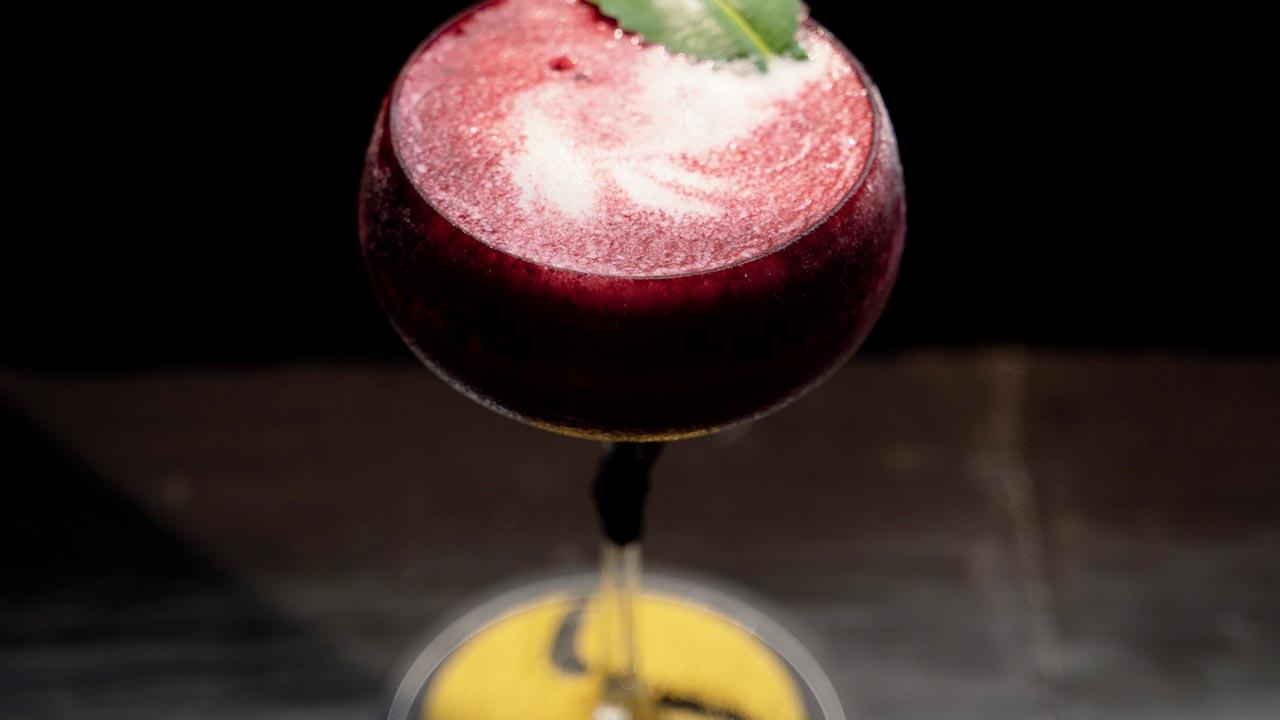 Banga Raya, a vodka, rose grenadine, gin and egg white cocktail served at Lair
Banga Raya, a vodka, rose grenadine, gin and egg white cocktail served at Lair
When the server hands you the menu, you see the same picture of the stairs in the logo, smartly crafted to represent the letter ‘A’ in Lair.
The cocktail menu is a map, divided into three stages: beginner, intermediate and supreme. Every cocktail taking you through a time in history, through ingredients and storytelling. “I wanted to draw attention to the mixology outlook, and give the people of Delhi an easy way to understand flavours and where the ingredients come from. The food menu is inspired by an Asian menu I chanced upon in Ibiza. My approach is to offer an iOS, not Android experience,” he announces, admitting, that “reading two whole lines of description below each dish was becoming a pain in the a** for patrons.”
 (Left to right) Founders Jay Solanki and Dhruv Raj Vij, visual designer Kavya Bagga and architect Sanchit Arora at Lair. Pics/Nishad Alam
(Left to right) Founders Jay Solanki and Dhruv Raj Vij, visual designer Kavya Bagga and architect Sanchit Arora at Lair. Pics/Nishad Alam
The idea was to simplify the user experience. For this, he divides the food menu into sections: Raw, Dimsums, Baos, Soil, Sea and Desserts. The vegetarian menu falls in Soil, so the patrons don’t have to go sift through the list of meat dishes.
Solanki and partner Dhruv Raj Vij have focused on the psychology of the client who walks into the 90-seater that’s located in Vasant Vihar. “When they walk in, they are very hungry. First, we offer them some truffle popcorn and then a short and crisp food menu to make their choices. Each dish has two points at best to detail the dish. Then, they can quickly get back to the conversation on the table.”
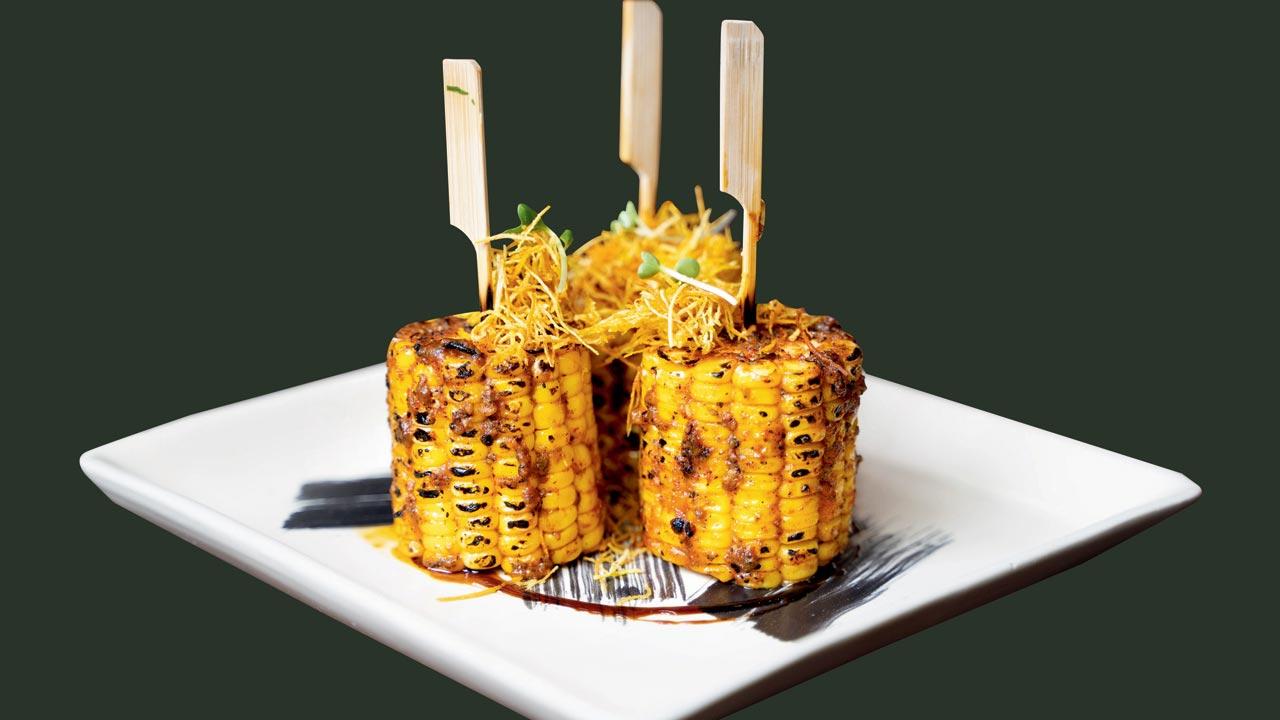 Shizo corn with spicy mayo
Shizo corn with spicy mayo
At the fag end of the menu, he credits the copy writer, the architect, and the menu designer. “The team has expressed what I wanted them to, and while the architect designed the space, the menu designer ensured that his vision trickled into the card too.”
A menu usually costs anything between R100 and R300 to print. Solanki’s menu, printed on handmade 600 GSM, costs R700. “This expense was accounted for the experience we were offering. How would a flimsy menu reflect on the service and food that follows?” says Solanki, who has not offered a QR code for a digital menu even during the pandemic. “It takes away from the experience.”
‘If Ekaa is the heart, word play are its artilleries’
Ekaa, Flora Fountain
Most patrons at Ekaa do not understand the menu because it is cryptic and barely gives away the name of a dish. It’s a medley of words hinting at a dish, ingredient or flavour. For example, the tasting menu includes the words Crisp, Taco and Cheese Toast.
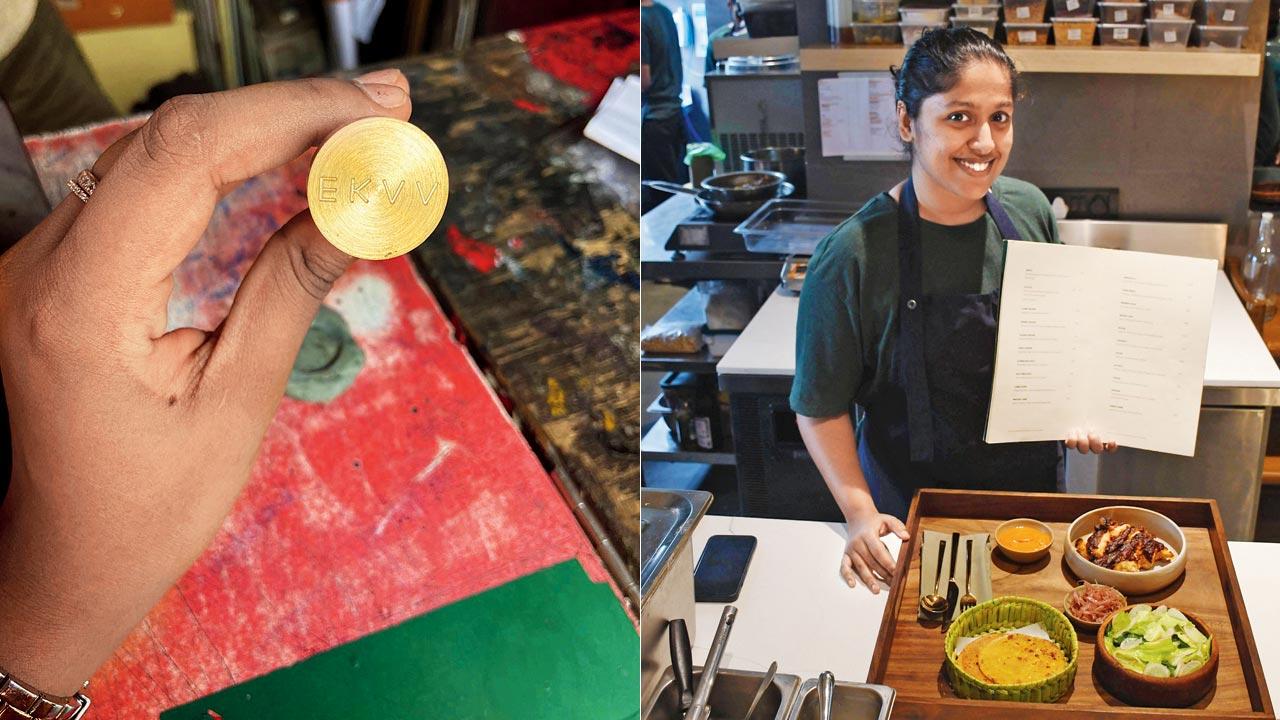 Chef and partner at Ekaa, Niyati Rao, with the menu. The design team chose to go with copper touches on special handmade paper, to represent the earthiness of the restaurant’s interiors. “For the copy, we went deeper into tracing where the ingredients came from,” says Mohan Sanda
Chef and partner at Ekaa, Niyati Rao, with the menu. The design team chose to go with copper touches on special handmade paper, to represent the earthiness of the restaurant’s interiors. “For the copy, we went deeper into tracing where the ingredients came from,” says Mohan Sanda
The classical interpretation of a menu is that it is going to tell you what you are going to eat. But at Ekaa, it is an open-ended interpretation. “Honestly, no one can comprehend what we are serving, because we serve what others don’t. Guests ask me for the name of the dish I have put on the table, and I don’t usually have one.
I tell them, taste it and call it what you like,” says chef and partner, Niyati Rao.
 Mohan Sanda
Mohan Sanda
One of the dishes is denoted by the word Arbi, and is served on the table as a DIY presentation. The rice tortillas are inspired by Malwani culture. Served with a green tomato rojo sauce, pickled papaya and a curry leaf crème fraiche, this is one of the 30 dishes on her menu. The pork and chicken sausage, says Rao, is a dish you would eat in Europe, but the diner feels a sense of community, a psychology that connects to ingredients and their combination. We don’t like them to connect to a specific region—this divides food and limits the chef,” explains Rao.
If Ekaa is the heart, the word play are the artilleries. Design agency Sparrow’s creative director Mohan Sanda had to change his classical approach for this project. “Each of Niyati’s dishes goes through the five elements. The menu relies on ingredients and flavours, and her interpretation. The team chose to go with copper touches on special handmade paper to represent earthiness that flows through the interiors. For the copy, we went deeper into tracing where the ingredients came from, their history, and how they have been interpreted,” says Sanda.
After every meal, patrons receive a Willy-Wonka inspired copper ticket meant to reveal an experience on their next visit. This is handed out with another letter that reads, punha ya, or do return. “The menu at Ekaa plays the role of keeping up the mystery, without overwhelming the guests,” says Rao.
‘It’s my ode to Dilli’
Sidecar, Greater Kailash II
In November 2020, Yangdup Lama of Sidecar and his team introduced a menu inspired by a book titled, A Sidecar Named Desire, which celebrated authors and their choice of spirits. “Ours was a take on what the authors would order if they ever came to Sidecar in the year 2020. It’s this idea that has kept us going to innovate with new cocktails,” says Lama.
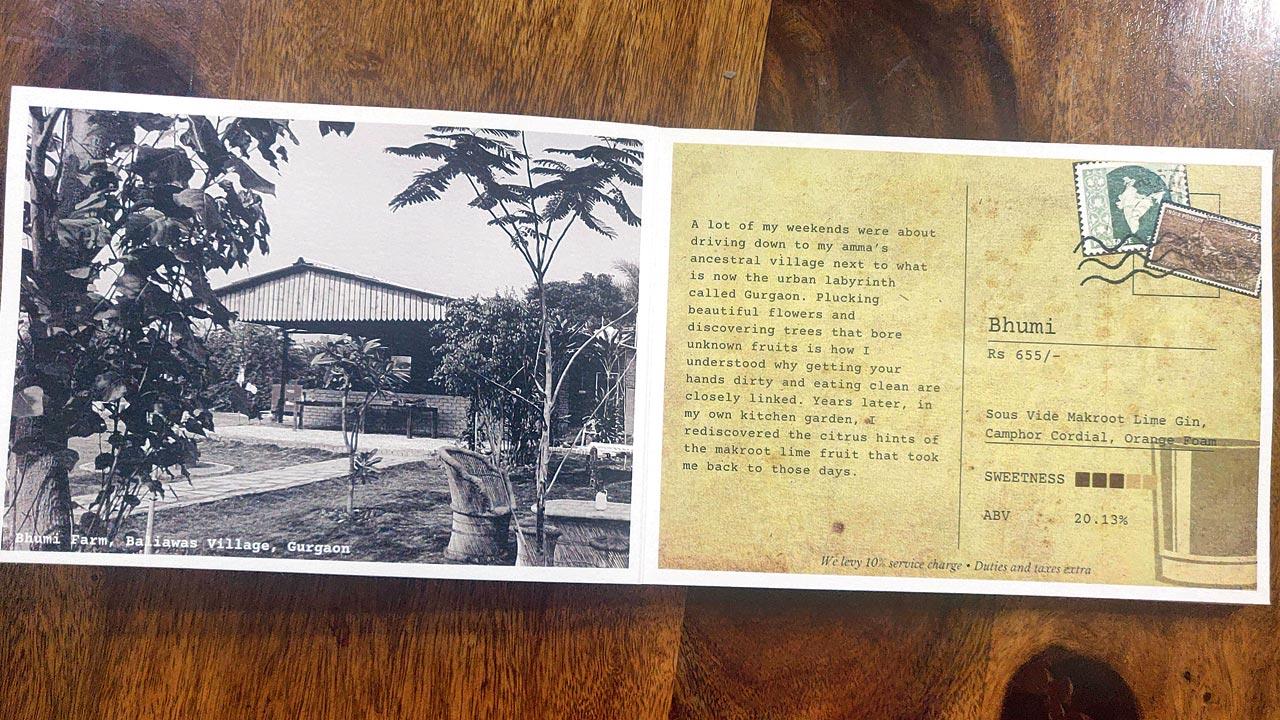 Pages from Sidecar’s menu resorts to the nostalgia of a childhood around what is now Gurgaon, linking the memory of makaroot lime to a cocktail called Bhumi that’s served at the resto-bar. Another one harks back to days at school when the Falsa or sweet-tart berry was sold by vendors in leaf pockets. Gaffar mixes falsa syrup with white rum
Pages from Sidecar’s menu resorts to the nostalgia of a childhood around what is now Gurgaon, linking the memory of makaroot lime to a cocktail called Bhumi that’s served at the resto-bar. Another one harks back to days at school when the Falsa or sweet-tart berry was sold by vendors in leaf pockets. Gaffar mixes falsa syrup with white rum
This summer, he launched Dear Delhi, a mini coffee table drinks menu book inspired by the popular bazaars and spots of the capital. He got friends and videographers Aakshee Gakhar and Vaibhav, along with writer friend Deepali Gupta Bhatia to help produce the book. It attempts to pour a tale, muddle a memory, stir a poem, and let the guest drink in the sights, sounds and flavours of Delhi. On our visit to the bar, we tried Gaffar, inspired by the flavours of Gaffar market and featuring the phalsa fruit syrup, rum, edible copper and wheat beer.
Sadar Bazaar is an ace attempt to mix stiff cognac with the fragrance of sandalwood and the nutty taste of laccha supari.
Course(s) in history
Chefs and culinary experts trace the arrival of the modern menu to India, crediting the British and the French
Menu cards were introduced in India by the British. “The oldest menu cards were found in British clubs and for dinners attended by governor generals. Most were handwritten for a single event carrying a list of the various courses to be served,” culinary anthropologist Kurush Dalal says. He adds that sometimes, various guests would receive a variety of menus; the one to have booked the table would get the one with the prices listed.
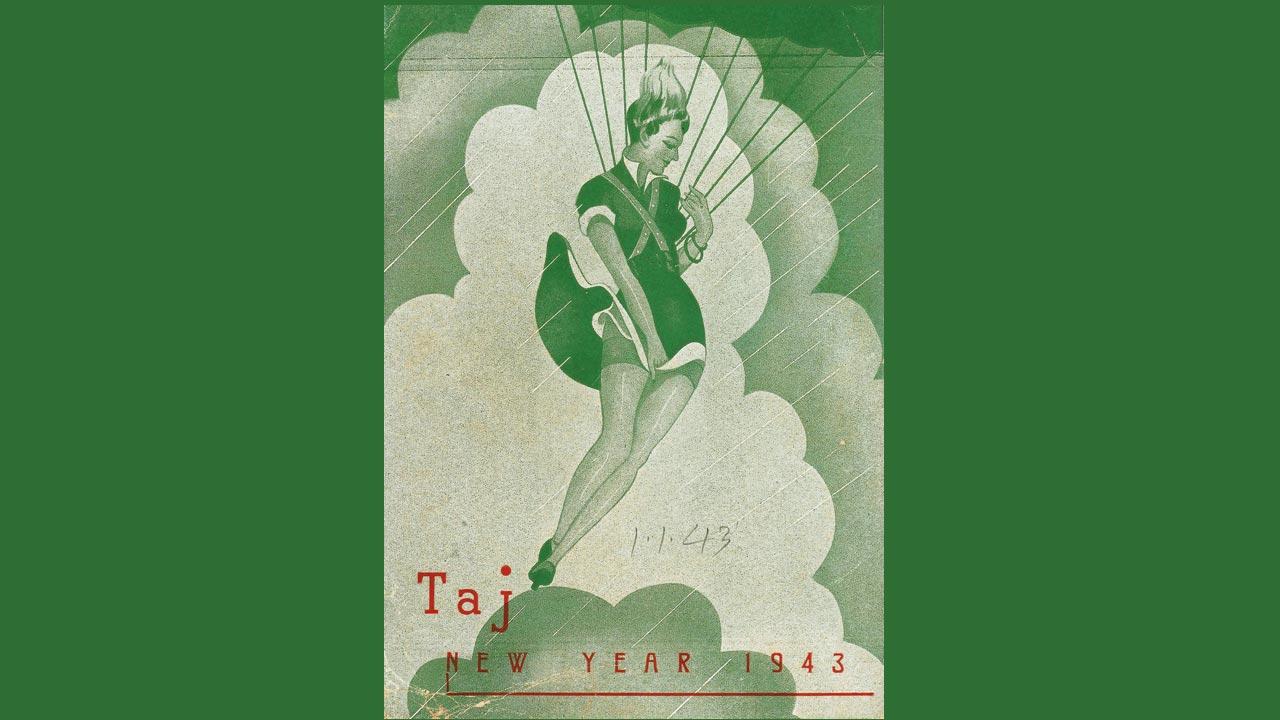 Old menus from the Taj Mahal Palace & Towers archive, including one that showcases a dinner and cabaret evening and another one that’s a New Year’s Eve special for the year 1943
Old menus from the Taj Mahal Palace & Towers archive, including one that showcases a dinner and cabaret evening and another one that’s a New Year’s Eve special for the year 1943
“Most of the older members-only clubs still have a menu of daily specials, which is handwritten on card paper. Udipi eateries and Irani cafés used to have their menus placed under the glass tabletops. “This kept the menu cards from being handled too much,” says Dalal.
Before paper, we had blackboards, with a list of the day’s dishes written on it. Every time the kitchen ran out of a dish, a staffer would arrive to strike it off the board.
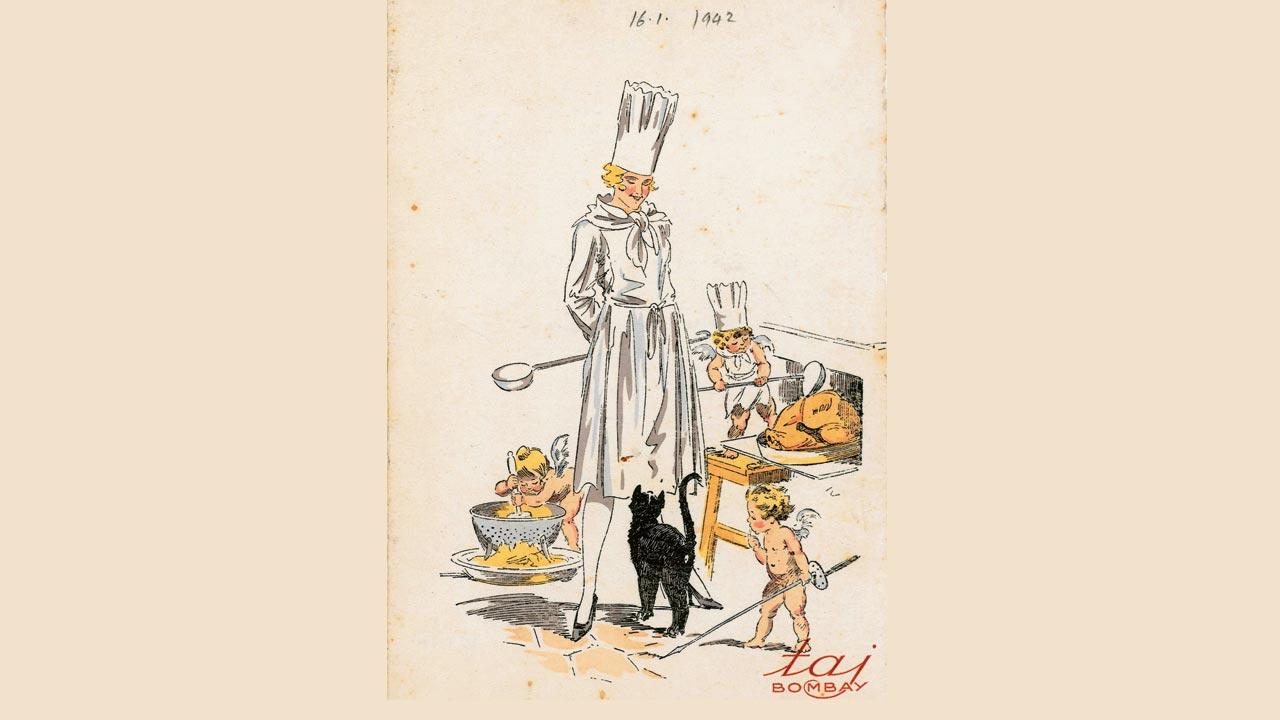
“Over the years, we went to boards that used plastic letters that fit into slots to make up names and prices.” The early menus at the Taj group of hotels were different from what we see today, says executive chef Rajesh Wadhwa of Taj Palace, Delhi, “It has always been the chef writing out the dishes. So, in a sense you can call us content creators. The descriptions were verbose, presenting a story with every dish. Back in the day, our menus were essentially all about food. Design was important, but the visuals were limited and the focus was on ensuring that the descriptions were well articulated.”
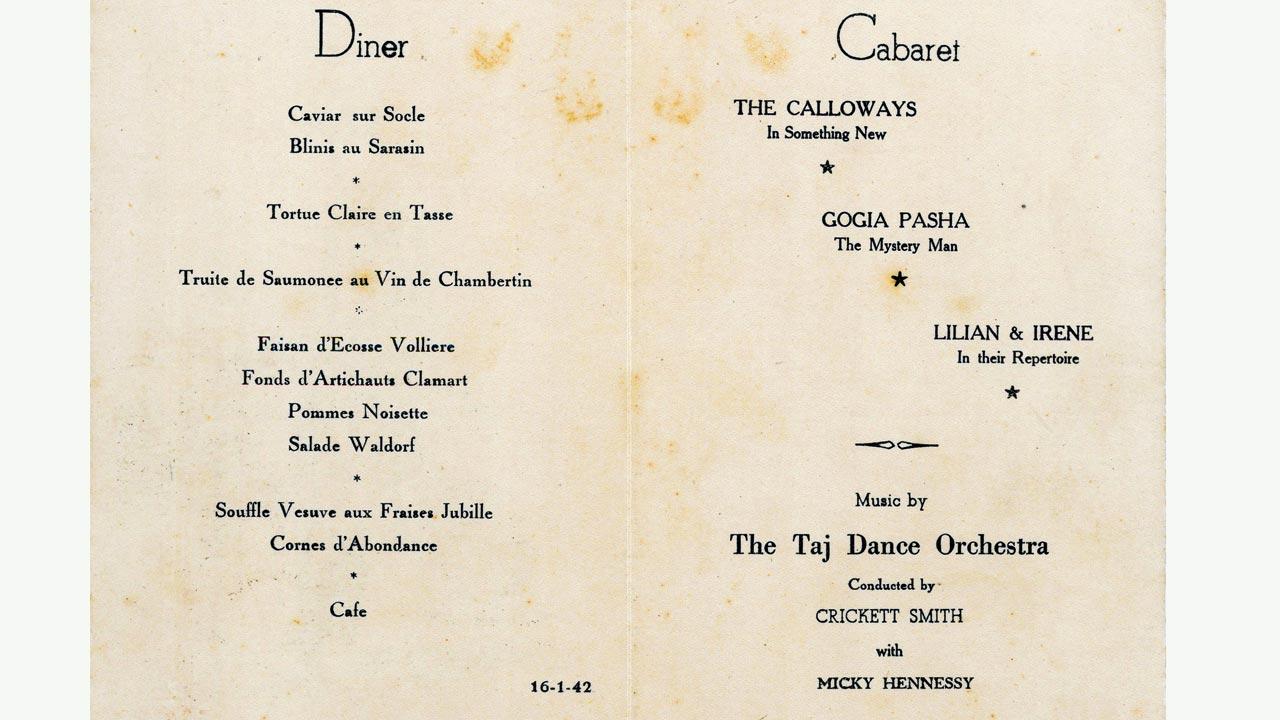 i
i
Five stars adopted the French classical menu style that divided the meal into entrees, appetizers, mains and dessert. “Slowly, the menus got shortened and became of two kinds—à la carte and tableau d’hote (TDH) menu, also known as a set menu, usually for a fixed group of diners, says Paul Noronha, executive chef, ITC Grand Central, Mumbai. “Folklore has it that much before menus were written, Maharajas were shown the pictures of dishes, and they pointed out what they wanted to eat,” says Noronha. As people’s dietary preferences widened, menus came with green and red symbols to identify if a dish was vegetarian or not. Then came symbols for sea-food, nuts and gluten.
 Paul Noronha
Paul Noronha
After the onset of COVID, menus slowly began to be digitised, especially with the growth of QR codes and iPad menus. “Now, you have menus on iPads with images. With technology, much has happened,” says Noronha.
 Subscribe today by clicking the link and stay updated with the latest news!" Click here!
Subscribe today by clicking the link and stay updated with the latest news!" Click here!










